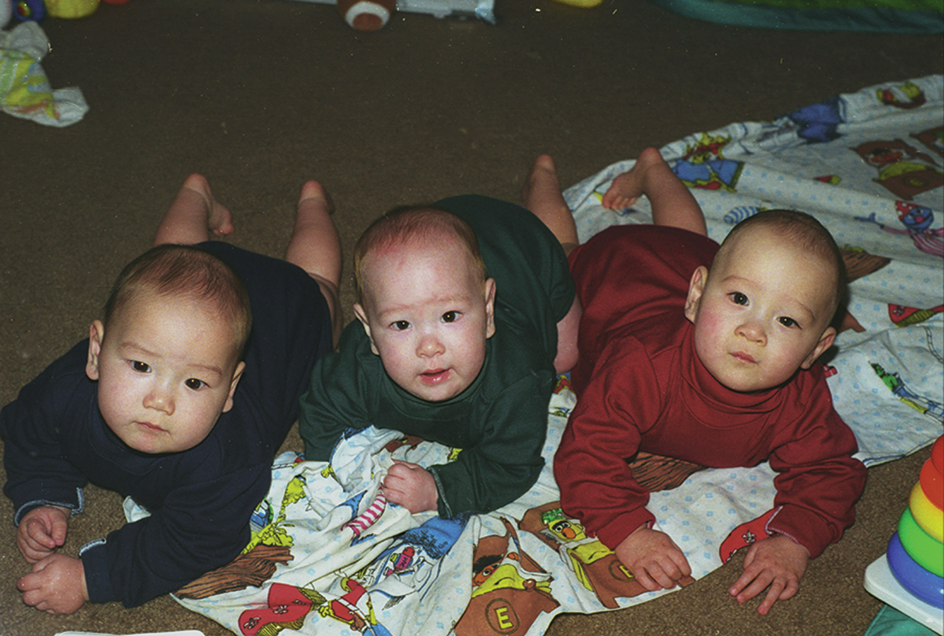Multiple birth is the birth of more than one infant during the same pregnancy. Twins, triplets, quadruplets, and quintuplets are all examples of multiple birth. In the past, such births were uncommon. Since the 1990’s, the occurrence of multiple births has increased, especially in Australia, Canada, Japan, the United States, and European countries. The increase is mainly due to greater use of fertility treatments.

Most multiple births in human beings involve twins. Twins can be either fraternal or identical. Fraternal twins may be the same sex or different sex, with each individual having a different genetic makeup. Identical twins are always the same sex and have an identical genetic makeup. As a result, they look much alike.
How multiple births occur.
In pregnancies that produce a single infant, one of the mother’s ovaries releases an egg that joins with a sperm from the father. The fertilized egg, called a zygote, develops into a baby. In pregnancies involving fraternal twins, also called dizygotic twins, the mother’s ovaries release two eggs at about the same time. A separate sperm fertilizes each egg, producing two zygotes. Identical twins, also called monozygotic twins, originate from a single zygote. Early in development, the zygote divides into two parts. The two parts develop into separate individuals who have the same genetic makeup.
Multiple births involving three or more infants occur through processes similar to those that produce twins. For example, if the mother’s ovaries release three or four eggs and each of the eggs becomes fertilized, fraternal triplets or quadruplets will be born. Rarely, a single zygote can split into three parts, leading to identical triplets. Conjoined twins, twins connected to each other, develop from a zygote that fails to separate completely. See Conjoined twins .
Causes of multiple birth.
Multiple births can occur naturally or as a result of fertility treatments. Identical twins occur at a fairly constant rate, about 1 set in every 250 births, throughout the world. The birth rate of fraternal twins, however, is more variable. Scientists do not know why some women release more than one egg each month. They believe that some people inherit a genetic tendency to multiple births because they are more common in some parts of the world than others. Also, twins and triplets occasionally occur in several generations of a single family, suggesting a genetic tendency.
Fertility treatments increase the chance of multiple births in several ways. Some fertility drugs work by stimulating the ovaries to release more than one egg. This increases the chances a woman will become pregnant, but it can also increase the risk of multiple births.
In vitro fertilization (IVF), another fertility technique, can also cause multiple births. In IVF, physicians use drugs to stimulate a woman’s ovaries to release many eggs. The eggs are removed during a process called egg retrieval. In a laboratory, the eggs are fertilized with sperm and are allowed to grow into embryos. Doctors then place the embryos back into the woman’s uterus. They usually transfer several embryos at one time to increase the chances of a successful pregnancy. But this process can also result in multiple births.
Complications of multiple birth.
Medical complications for both the mother and babies are more common in multiple births compared to single pregnancies. Complications for the mother include a higher risk of miscarriage, gestational diabetes (diabetes associated with pregnancy), hypertension (high blood pressure), and bleeding after delivery. Complications for the babies are usually due to premature (early) birth and include low birth-weight, lung disorders, stroke, digestive disorders, and problems with hearing and eyesight. Premature birth is the leading cause of death for infants in multiple births.
See also In vitro fertilization (IVF) .
